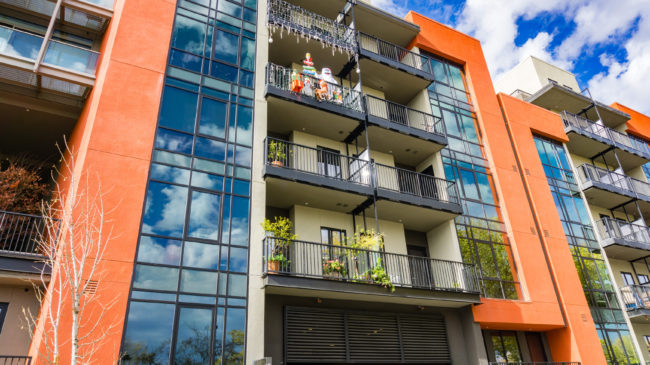The Bay Area is notorious for its high cost of living. According to a report on the city of San José’s housing market, the average monthly rent for a two-bedroom apartment is $2,723. To afford such a space, renters must earn around $52 per hour, which can be difficult in an economy where employment is comprised of mainly high-income tech jobs and low-income service jobs.
In order to fight the high cost of living, San José’s community organizations coalesced to write a Community Strategy Report with various proposals aimed at lowering the rate of evictions, gentrification, and unaffordable housing. The report aims to convince the city, which will be writing its own report this spring, of the need for decisive action.
While many of the actions that the community report advocates may slow down displacement for certain residents, they would also likely spike rents for many other residents and do not address the underlying cause of rent inflation, namely zoning rules and a tremendous undersupply of new housing construction.
The high cost of living is genuinely detrimental to the lives of many citizens of San José and the greater Bay Area. The report says five percent of Santa Clara County’s displaced residents became homeless. This is one of the major causes for California’s homeless crisis. California has 1/8 of the nation’s population but a quarter of the nation’s homeless population. The Santa Clara County report also found that displaced residents had a 19 percent higher chance to be severely rent-burdened.
In order to combat the housing issues facing San José residents, the report advocates a three-pronged strategy of protection, production, and preservation. Their proposals include various new forms of funds, through bonds and city spending, as well as various “tenant protection” laws, such as rent controls. The market has failed, they argue, and so the government should step in to protect the poor and vulnerable in society. However, there is a consensus among economists that rent controls increase rents for apartments that aren’t rent-controlled, leading to more evictions in the long-run.
The Community Strategy Report also argues that public housing is significantly better at offering stability to low-income residents. According to a UC Berkeley study cited by the report, a single unit of subsidized public housing has as much impact on displacement as two market-rate units. However, this factoid can also be used to advocate for market-rate housing. Through the process of “filtering”, building market-rate housing allows high-income tenants to move out of low-income housing, thereby opening up more low-income housing. It’s similar to a game of musical chairs; add in enough seats for everyone, and no one loses.
Throughout the report, they make a clear distinction between “affordable” and “luxury” housing. The authors contend that the city has exceeded its market-rate production goals and should now focus on more affordable housing. However, this argument makes a false distinction between “affordable” housing, which means housing that benefits from subsidies, and housing affordability, which means the rates that people actually pay.
The Bay Area has a severe market-rate housing shortage. According to Bloomberg News, for every 5.4 jobs created in San Francisco between 2011 and 2017, just one new unit of housing was created. Academics widely agree that the undersupply of housing is the primary reason for the Bay Area’s high rents. And the undersupply is largely due to zoning laws mandating low-density development.
According to a New York Times piece, for example, in 94 percent of San José it is illegal to build anything except a single-family home. Allowing for the construction of small apartments, duplexes, and other dense housing would slow the rate of rent increases for everyone, not just the few who are in subsidized public housing or rent-controlled apartments.
The Community Strategy Report, which disparages market-rate housing, should look carefully at the historical cases of other cities’ housing crises. Just north of San Jose, over the last few decades, San Francisco implemented many of the Community Strategy Report’s suggested solutions. San Francisco is now the most rent-controlled city in America, spends the most on public housing, and is one of the most gentrified.
The city of Houston, on the other hand, has no zoning codes. Developers are free to meet market demands as needed. Because of this, Houston is one of the most affordable big cities in America and one of the most diverse.
Displacement and high rents need to be solved for San José to move into a better future. However, zero-sum fights over a diminishing pool of housing cannot be a long-term solution. Reducing zoning laws and allowing for more market-based housing construction would solve some of the housing undersupply problems and allow many low-income residents in market-rate housing to thrive. Any anti-displacement strategy that doesn’t take supply and demand into account will ultimately be treading water at best.
A version of this column previously appeared in OpportunityNow.

